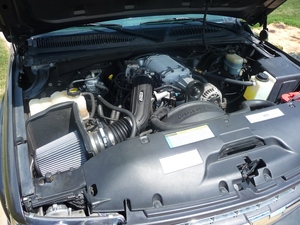You don’t have to be a professional speaker to give a professional quality speech. This article will cover how to create a quality presentation outline as well as detailing the important parts of a speech.
Select and Define the Key Points of Your Presentation.
Once you’ve defined the main point of your presentation (see How to Prepare a Great Presentation) you will need to really hammer out the key points and ideas of your speech. In my sample doula speech for example I might include some key points like “Women who have labor support use less pain medication during the birth process.”, “Women who have adequate labor support suffer less post partum depression and feel more satisfied with their birth experience.” and “Doulas go through specialized training to support laboring women effectively. You can see how each of my key points becomes an idea in my presentation that can be easily fleshed out.
Gather Evidence for Each Presentation Key Point.
This evidence later becomes a lot of the main body of your speech. For an effective presentation use a variety of evidences.
Quality evidence for a presentation can include:
Facts – Verifiable data that is often given a higher weight in terms of validity, persuasive power and integrity with the audience.
Testimony – Supporting statements from experts or civilians has varying weight given to it in the audiences mind depending on the topic, and the qualifications of the person giving the testimony.
Narrative – Stories that provide the “human element” often leave a lasting impression in the mind of the audience so they should carefully selected for your presentation.
Definitions – Defining words and situations also helps emphasize a key point; i.e. Doula means “with woman”.
Decide How you Want to Organize your Speech Material.
You can progress through a presentation in a number of ways. The important thing is to select one organizational structure for your speech and stick with it.
Common organizational structures include:
Topical or Thematic – Progressing from theme to theme in a logical way.
Chronological – Presenting your material from past to present.
Cause/Effect – Well suite for an informative speech this presents what happened and why it happened.
Problem/Solution – Well suited for a persuasive speech this organizational structure presents what the problem is and what should be done about it.
Create an Outline for Your Presentation.
An outline will solidify and clarify your presentation so you know exactly what information is being presented and when you will be presenting it. A presentation outline also helps keep you on topic, prevents you from losing your place, ensures you cover all your key points, allows flexibility in your speech because it isn’t written word for word and at the same time gives your speech structure. An outline is not the entire speech written out word for word but rather a point by point shell of the material you will cover.
A complete presentation outline will include an opening, visual aid use, subject material, transitions and a closing. Let’s touch on each of these parts in more detail.
The Presentation Opening
The opening is one of the most crucial portions of the entire presentation and should be carefully planned and rehearsed. You’ll want to introduce yourself and share a bit of information about yourself that will show your experience in the field. Summarize the main point you defined in “How to Prepare a Great Presentation” and clarify the subject focus for your audience. Briefly outlining the key points you plan to cover will assure your audience that you know where you are heading, help them retain the information through repetition and get their attention.
Presentation Visual Aids
Details about visual aids can be found in the article “How to Use Effective Visual Aids” but let’s talk about including visual aids in your outline. You will want to include the visual aids you plan to use right in your outline, complete with track numbers, time stamps, page numbers or demonstration title.
For example, in my sample doula presentation I might use a video of women giving testimonials about their experience with a doula. So in my outline I would say “Testimonial Video 10:15” telling me not only that I planned to use a video there but also letting me know exactly where on the tape the portion was I wanted to show my audience. This saves me tremendous time and embarrassment trying to find a selected clip or searching through an entire packet of handouts for that one certain graph I want to show them.
Transitions in the Presentation
Transitions are what move you from section to section in your speech. In a presentation, the transitions bring you from the opening, through the main body material to the closing. A transition can reinforce the speeches organization or demonstrate how the ideas presented relate to that all important single main point.
Practice these transitions head of time! Include a note about the transition in your presentation outline. This is really important because a bad transition is as jarring and upsetting to the flow of the speech as a high speed U-turn would be to a car ride.
Closing the Presentation
The closing of the presentation is very important because it will be the last thing the audience hears. Begin by letting the audience know your speech is coming to an end.
The closing of your presentation should not include any new key points or ideas – all of these should be in the body of the speech. However, the presentation closing can include new evidences, facts or stories that support the main point, or key ideas as long as they are a continuation of objectives already presented and discussed.
The presentation closing portion should summarize the main point again. If your speech was persuasive it should also include a call to action. You presented the information – now what should they do about it?
The presentation closing should also “give ’em something to talk about” with a poignant statement that will stay with them. Consider a fantastic statistic, a poignant quote or heart warming story (especially one that ties back to a story shared in the opening portion of the speech).
Now you have all the tools you need to prepare and outline a professional level presentation. This article is part of a four part series on speech making and effective presentations: How to Prepare a Great Presentation, How to Create an Effective Presentation Outline, How to Use Effective Visual Aids and How to Deliver a Great Presentation. See the other articles to continue learning presentation skills.




